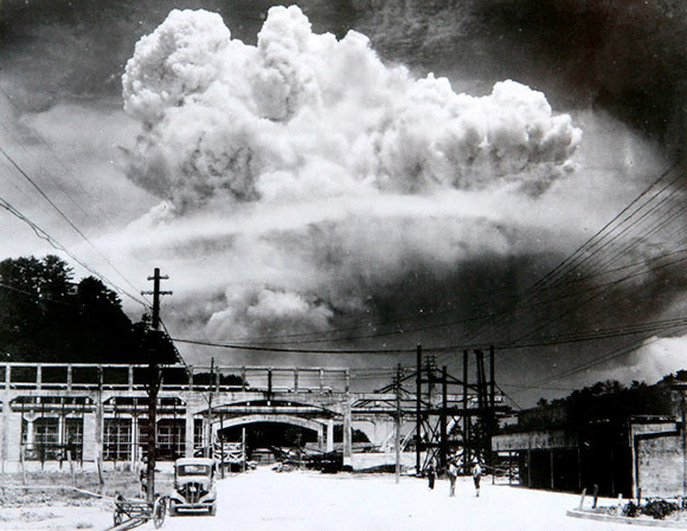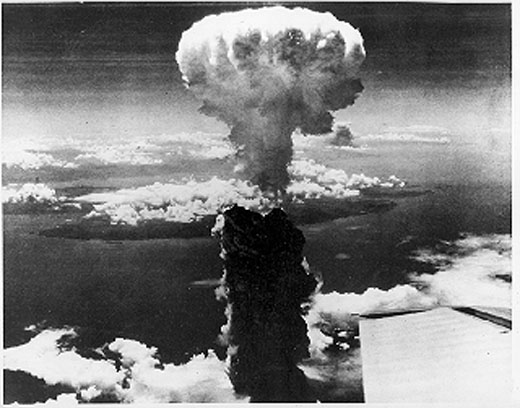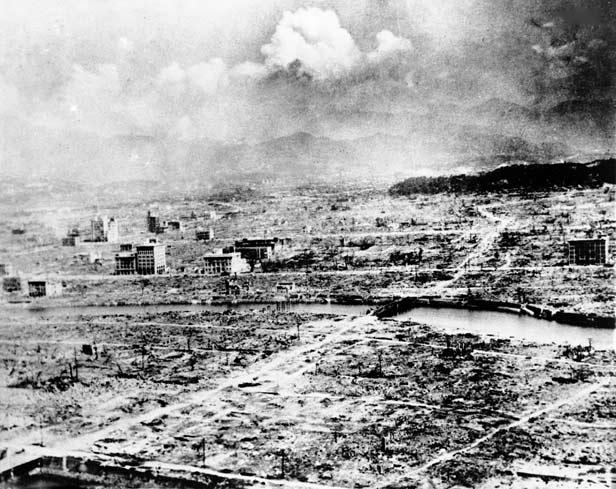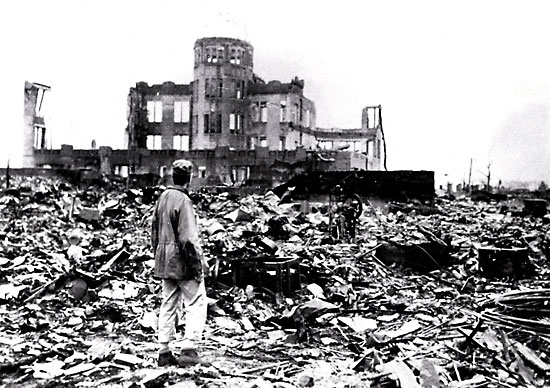Air Operations, Central Pacific
Fleet Carrier Air Group 10 (USS Intrepid) attacks Wake Island.
Air Operations, CBI
CHINA- 10 14th Air Force P-51s attack locomotives.
- Assorted FEAF aircraft attack targets of opportunity in the Shanghai area.
- 15 Task Unit 95.3.1 FMs, 6 F4Us, and 2 F6Fs attack port facilities, shipping, and an airfield at Tinghai.
Air Operations, Japan
- The 509th Composite Bomb Group B-29 Enola Gay, piloted by Col Paul W. Tibbets, Jr., the group commander, drops an atomic bomb on Hiroshima at 0815 hours. An estimated 71,000 people are killed in the blast, and more than 80 percent of the city’s buildings are destroyed.
- More than 150 319th Medium Bomb Group A-26s and FEAF P-47s fly through bad weather to attack their primary target, the city of Miyakonojo.
- More than 170 FEAF B-24s, B-25s, and P-47s attack their secondary target, the city of Kagoshima.
- More than 60 FEAF B-25s and P-51s attack shipping and targets of opportunity around the Tsushima Strait and the northern Ryukyus.
- FEAF P-51s sweep the seas between Kyushu and Korea and attack targets of opportunity on Saishu Island.
- FEAF P-47s attack Anjo, Tanega Island.
- Assorted aircraft attack targets of opportunity on the Inland Sea, western Shikoku, southern Honshu, the northern Ryukyus, and the southern Korea coast.
- nearly 100 VII Fighter Command fighter-bombers based on Iwo Jima attack airfields and 6 other military installations in the Tokyo area.
Air Operations, Korea
348th Fighter Group P-51s down 4 A6M Zeros over the Cheju airfield at 0935 hours.
[Air Operations, Philippines
XIII Bomber Command B-24s attack pockets of resistance on Negros.
[Air Operations, Pacific
Operation CENTERBOARD. At about 9:30a.m. a B-29 named Enola Gay, named after the pilot's mother, of the 393rd Bomb Squadron, 509th Composite Group, 20th Air Force, and commanded by the American Col Paul Tibbets, takes off from Tinian in the Marianas at 2:10a.m., and drops the first atomic bomb on Hiroshima. It was a 20-kiloton bomb named 'Little Boy' from an altitude of 31,000 feet. It explodes after 18 seconds 1850 feet above the city. More than 4.5 square miles of built-up area is obliterated. The tail-gunner on the aircraft, who sees the explosion, exclaims: 'My God! What have we done!'
92,233 people are killed and 37,425 injured, many of whom die later from the effects of radiation. The bomb is an uranium fission weapon and the yield is in the region of 20,000 tons of TNT. It is not the most devastating bombing attack of the war the March fire raids on Tokyo have had a larger effect but the economy of effort involved in sending only one plane on a mission to destroy a city shows only too well the complete change in military and political thinking which has been begun.
[Pacific
- The US submarine Bullhead (SS-332) is presumed to have been sunk off Bali in the Java Sea probably by Japanese Army aircraft.
- USAAF mines sink the Japanese merchant cargo ships No.2 Chokai Maru off Fushiki Light, Isojima Maru in south channel of Kammon Strait and No.2 Kozan Maru north of Ushi Island.
United States, Home Front
Maj Richard I. Bong, top American fighter 'ace' of World War II with 40 victories, is killed testing a jet fighter. He was 24.
[Images from August 6, 1945
|
|
|
|



